Are you ready? Today’s global, fast-paced environment demands we make better decisions quicker and with a higher degree of confidence. The opportunity in front of all of us is to harness insights from old and new data sources, to think about problems differently and to take advantage of opportunities faster than we have been able to in the past.
Every interaction we have today consumes and/or creates data. When you search online you highlight which products and services interest you. When a shipment leaves a port in Shanghai it creates volumes of data. Weather patterns provide indicators that can impact transportation, crop harvests and buying intentions. Social media interactions help drive sentiment and create or crush demand. There is a wealth of structured and unstructured data available to tap into.
Enterprise systems also produce a gold mine of valuable data. Many of these solutions can help visualize this data based on normal, cadenced-based schedules (think of spreadsheets or off-the-shelf business intelligence tools). However, today’s global businesses are moving faster. We need to support better decision-making with improved insights and be able to serve this up at a moment’s notice going well beyond simple visualizations. The key is transforming this data into actionable insights—and analytics is the instrument to make this a reality.
Are you ready? Today’s global, fast-paced environment demands we make better decisions quicker and with a higher degree of confidence. The opportunity in front of all of us is to harness insights from old and new data sources, to think about problems differently and to take advantage of opportunities faster than we have been able to in the past.
Every interaction we have today consumes and/or creates data. When you search online you highlight which products and services interest you. When a shipment leaves a port in Shanghai it creates volumes of data. Weather patterns provide indicators that can impact transportation, crop harvests and buying intentions. Social media interactions help drive sentiment and create or crush demand. There is a wealth of structured and unstructured data available to tap into.
Enterprise systems also produce a gold mine of valuable data. Many of these solutions can help visualize this data based on normal, cadenced-based schedules (think of spreadsheets or off-the-shelf business intelligence tools). However, today’s global businesses are moving faster. We need to support better decision-making with improved insights and be able to serve this up at a moment’s notice going well beyond simple visualizations. The key is transforming this data into actionable insights—and analytics is the instrument to make this a reality.
The Five Stages of Analytics
There are five commonly used forms of analytics. While difficulty (attainment) increases as you incorporate each type into your process, so too do the benefits.
Descriptive analytics focus on what happened. For many organizations, descriptive analytics are likely the first type that come to mind and include dashboards, alerts and report visualizations.
Diagnostic analytics help you understand why it happened. Think of this as root cause analysis and planner initiated what-if analysis.
Predictive analytics become more interesting as you start to focus on what could happen. With predictive analytics we are able to evaluate multiple scenarios for the business and start to leverage machine learning capabilities to determine the best course of action to take forward.
Prescriptive analytics help you answer the question, “what should I do?” They can consider a wide variety of attributes and business conditions to quickly help you determine the next right steps for your business.
Cognitive analytics bring the power of machine learning and artificial intelligence to help you gain insight into new patterns, new data sources, risks and opportunities you’re not yet thinking about.
The goal for any organization should be to expand your analytics capabilities across this spectrum of opportunity, leveraging a portfolio of techniques to gain new insights to support more complex decision-making, gain confidence in the decision quality and accelerate the pace your business is able to move forward.
Don’t Stop at Visualizations
While a picture can paint a thousand words, analytics go way beyond visualizations. Pretty graphs and charts are part of it, but the real value comes from leveraging algorithmic planning, machine learning and artificial intelligence to drive more automation, mitigate risk and harness new opportunities.
Advanced analytics are about gaining new insights to run the businesses more effectively. This includes serving customers better, boosting revenues and improving margins. To do so you must be able to quickly analyze a lot of data and serve it in a way that is meaningful to its intended audience.
Supply chain executives need the ability to rapidly evaluate multiple scenarios and drive smarter, more informed decisions. Trust in the data, the business capability model (digital twin) and the scenarios generated along with your ability to execute and measure the success of the plan. Make sure your supply chain system incorporates advanced analytics and will quickly perform the heavy lifting, visualization and analysis needed to ensure your plans are aligned with stated business goals.
Build Your Own Time Machine
Analytics is a hot topic in supply chain. Industry research firms have developed multiple maturity spectrums and published numerous reports. One aspect many of these do not incorporate is time. Analytics should collapse the timeline by accelerating your decision-making process. This acceleration requires advanced capabilities like machine learning to churn through huge data resources very quickly and efficiently in order to evaluate multiple scenarios for the business. As you collapse time, and the systems become smarter and results start to show the value in predictive and prescriptive analytics, business confidence will rise.
For example, let’s look at a global consumer goods (CG) company and how they were able to utilize several types of analytics to evaluate an opportunity. One of the company’s trusted suppliers proposed expanding its current relationship with the CG company to extend to additional component product lines. As a current supplier, the risk of switching was reduced. After all, they are a known entity. Moving to the “new” supplier would change the manufacturing location from its current position in Mexico to China, while also reducing the cost per unit. The question posed to the supply chain organization was simple. In fact, your procurement team may have asked you the same question: “Does it make sense for the business to switch suppliers? Does the lower per unit cost translate into lower total costs for our business and deliver equal or greater service levels and quality?”
In the past, a question like this would have taken the CG company two to three weeks to model and evaluate. And after long hours of spreadsheet-based analysis, the choice would ultimately still be a coin flip (or wrapped with several caveats). Confidence was not high in the predicted outcome of each scenario or may have been unduly influenced by personal agendas. However, through the advanced analytics capabilities of Logility Voyager Solutions, the CG company quickly leveraged the new data to evaluate hundreds of scenarios. In a matter of just a few hours, the team developed a plan that gave the business decision-makers the insight needed to make a selection. The comprehensive quality of the analysis gave the business team a high-degree of confidence in their recommendation. Interestingly, based on anlaysis, the decision was made to stay with its current supplier in Mexico.
Take Action
Advanced analytics provide a wealth of information that can help steer a company in the right direction. More than charts and graphs or the static analysis generated from a business intelligence (BI) tool, today’s supply chain analytics help teams arrive at the right answer faster. The speed at which data can be harnessed and analyzed provides an advantage of opportunities to mitigate risks and stay ahead of the changing expectations of customers. The supply chain just got smarter. Are you ready?
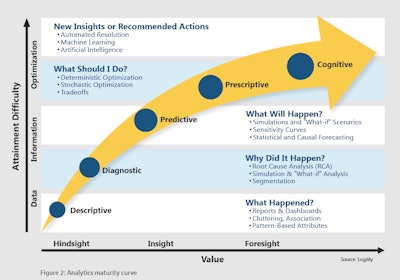





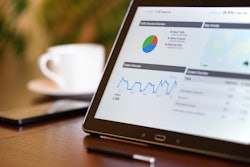


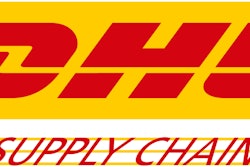
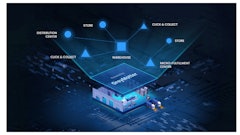
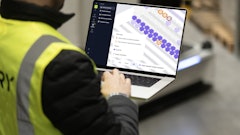







![Pros To Know 2026 [color]](https://img.sdcexec.com/mindful/acbm/workspaces/default/uploads/2025/08/prostoknow-2026-color.mduFvhpgMk.png?ar=16%3A9&auto=format%2Ccompress&bg=fff&fill-color=fff&fit=fill&h=135&q=70&w=240)
